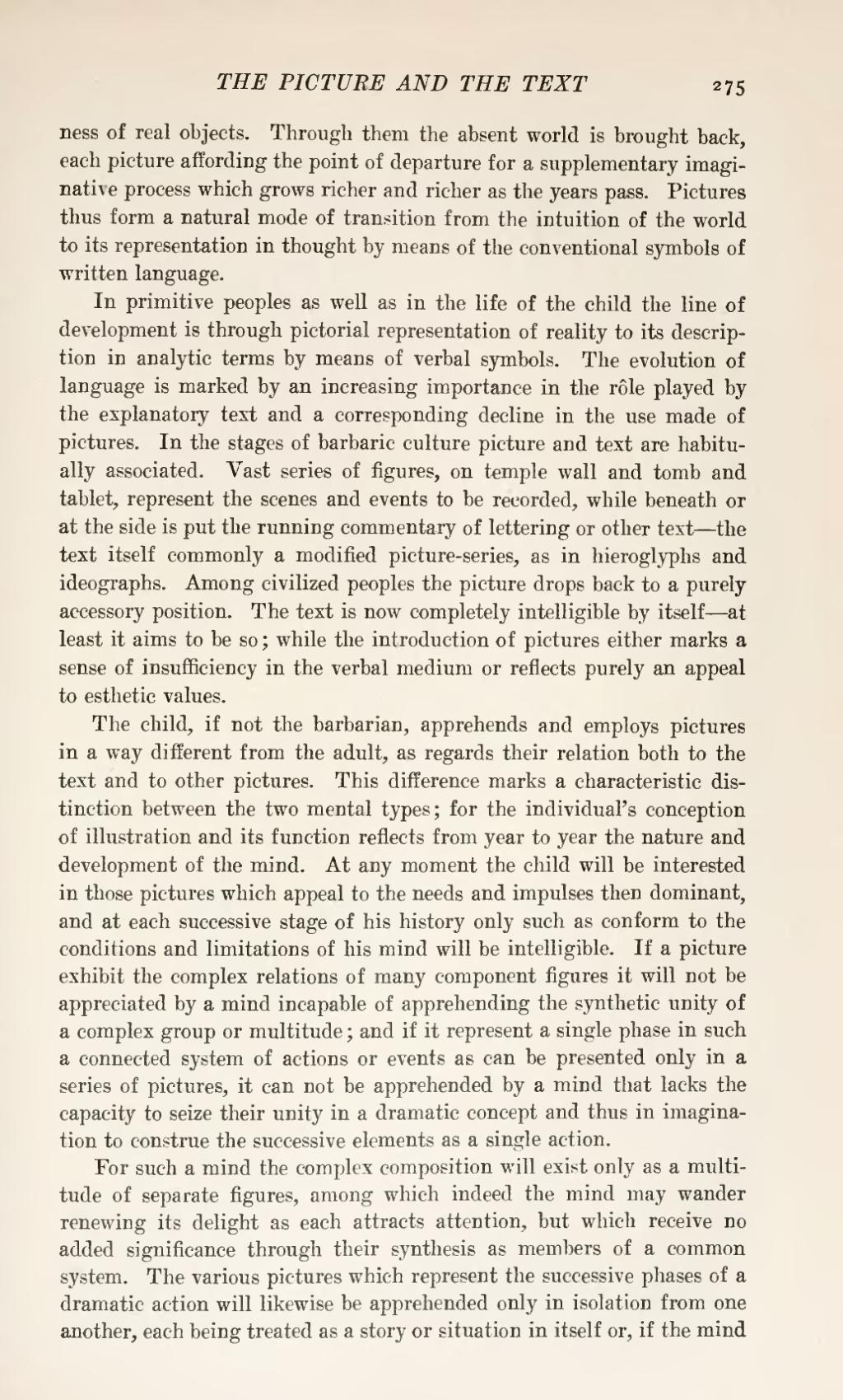ness of real objects. Through them the absent world is brought back, each picture affording the point of departure for a supplementary imaginative process which grows richer and richer as the years pass. Pictures thus form a natural mode of transition from the intuition of the world to its representation in thought by means of the conventional symbols of written language.
In primitive peoples as well as in the life of the child the line of development is through pictorial representation of reality to its description in analytic terms by means of verbal symbols. The evolution of language is marked by an increasing importance in the rôle played by the explanatory text and a corresponding decline in the use made of pictures. In the stages of barbaric culture picture and text are habitually associated. Vast series of figures, on temple wall and tomb and tablet, represent the scenes and events to be recorded, while beneath or at the side is put the running commentary of lettering or other text—the text itself commonly a modified picture-series, as in hieroglyphs and ideographs. Among civilized peoples the picture drops back to a purely accessory position. The text is now completely intelligible by itself—at least it aims to be so; while the introduction of pictures either marks a sense of insufficiency in the verbal medium or reflects purely an appeal to esthetic values.
The child, if not the barbarian, apprehends and employs pictures in a way different from the adult, as regards their relation both to the text and to other pictures. This difference marks a characteristic distinction between the two mental types; for the individual's conception of illustration and its function reflects from year to year the nature and development of the mind. At any moment the child will be interested in those pictures which appeal to the needs and impulses then dominant, and at each successive stage of his history only such as conform to the conditions and limitations of his mind will be intelligible. If a picture exhibit the complex relations of many component figures it will not be appreciated by a mind incapable of apprehending the synthetic unity of a complex group or multitude; and if it represent a single phase in such a connected system of actions or events as can be presented only in a series of pictures, it can not be apprehended by a mind that lacks the capacity to seize their unity in a dramatic concept and thus in imagination to construe the successive elements as a single action.
For such a mind the complex composition will exist only as a multitude of separate figures, among which indeed the mind may wander renewing its delight as each attracts attention, but which receive no added significance through their synthesis as members of a common system. The various pictures which represent the successive phases of a dramatic action will likewise be apprehended only in isolation from one another, each being treated as a story or situation in itself or, if the mind
